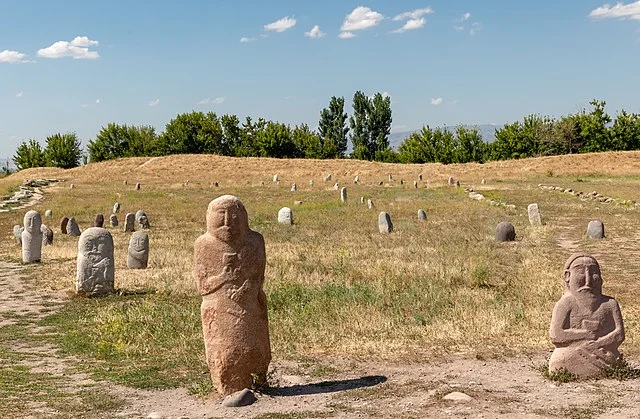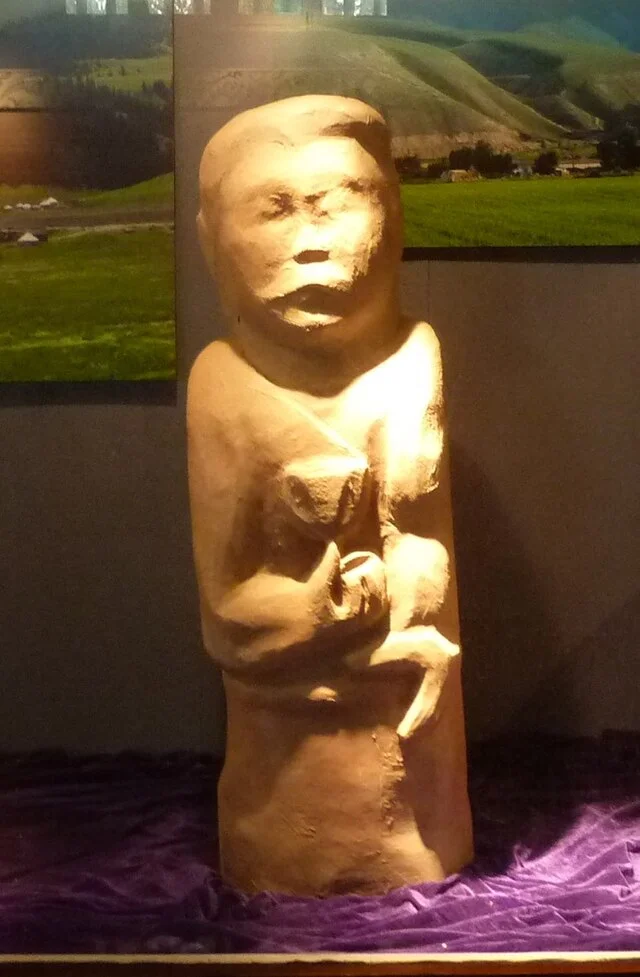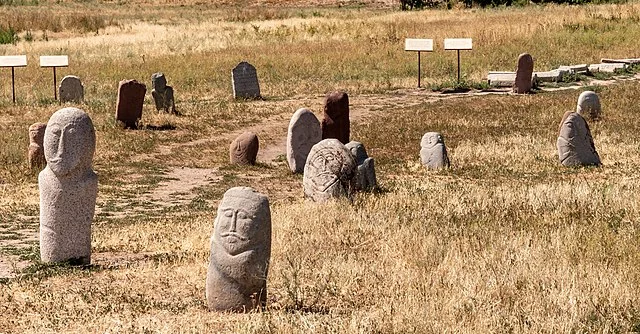Kurgan stelae are stone monuments associated with burial mounds, known as kurgans, found throughout Central Asia, including Kyrgyzstan. These stelae, dating primarily from the Bronze Age to the early medieval period, provide valuable insights into the cultural practices, religious beliefs, and social structures of the nomadic and semi-nomadic peoples who inhabited the region.
Get your dose of History via Email
Origins and Distribution

Kurgan stelae in Kyrgyzstan are part of a broader cultural phenomenon that spans the Eurasian steppe, from Eastern Europe to Mongolia. The use of kurgans began as early as 2500 BC, during the Bronze Age. The practice continued into the Iron Age and the early medieval period, particularly among the Scythians, Sarmatians, and Turkic nomads. In Kyrgyzstan, these stelae are often associated with the early Turkic cultures that dominated the region by the 6th century AD.
Physical Characteristics

Kurgan stelae are typically upright stones, varying in size and shape, but usually resembling human figures. Many stelae are carved with images of weapons, such as swords and bows, or symbols of rank and status. Some stelae also feature inscriptions or carvings of human faces, often stylized and simplistic in design. These figures likely represented important individuals, possibly warriors or tribal leaders, who were buried within the associated kurgan.
The stelae often stand at the top or near the burial mound, serving both as grave markers and as symbols of power and prestige. In Kyrgyzstan, these monuments are found in clusters, often in open steppe landscapes, indicating areas of significant cultural importance.
Cultural Significance

The Kurgan stelae provide evidence of the nomadic societies’ beliefs in an afterlife and their reverence for their ancestors. The presence of weapons and other symbols suggests that these figures were honored for their martial prowess. Additionally, the stelae may have had a role in ancestor worship, a common practice among Turkic and other steppe cultures.
These monuments also reflect the social hierarchies of the time. The size and complexity of the stelae often correspond to the status of the individual they represent. Larger, more elaborately decorated stelae indicate higher social standing, while smaller, simpler stones suggest lower status individuals.
Modern Discoveries and Preservation
Many kurgan stelae in Kyrgyzstan have been discovered in recent archaeological surveys, with several well-preserved examples located in the northern regions of the country, including the Chüy Valley. These discoveries have contributed to a growing understanding of the ancient nomadic cultures that once dominated the region. However, the preservation of these stelae remains a challenge, as natural erosion, vandalism, and looting threaten many sites.
Local and international efforts are underway to protect these monuments. Several kurgan stelae have been moved to museums, while others remain in situ, with protective measures in place to ensure their preservation.
Conclusion
Kurgan stelae in Kyrgyzstan represent a vital link to the region’s ancient past. These stone monuments offer insight into the beliefs, social structures, and cultural practices of the nomadic peoples who once roamed the vast steppes of Central Asia. Ongoing archaeological research and preservation efforts are crucial to safeguarding these important artifacts for future generations.
Source:

